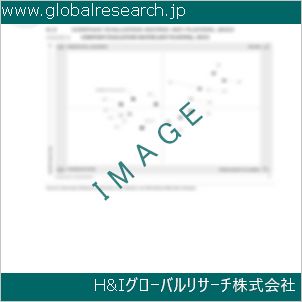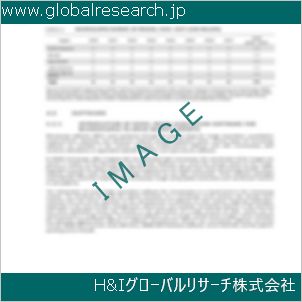Table of Contents
1 Industry Overview of Thiosemicarbazide
1.1 Definition and Specifications of Thiosemicarbazide
1.1.1 Definition of Thiosemicarbazide
1.1.2 Specifications of Thiosemicarbazide
1.2 Classification of Thiosemicarbazide
1.3 Applications of Thiosemicarbazide
1.3.1 Nuclear Application
1.3.2 Non-Nuclear Application
1.4 Industry Chain Structure of Thiosemicarbazide
1.5 Industry Overview and Major Regions Status of Thiosemicarbazide
1.5.1 Industry Overview of Thiosemicarbazide
1.5.2 Global Major Regions Status of Thiosemicarbazide
1.6 Industry Policy Analysis of Thiosemicarbazide
1.7 Industry News Analysis of Thiosemicarbazide
2 Manufacturing Cost Structure Analysis of Thiosemicarbazide
2.1 Raw Material Suppliers and Price Analysis of Thiosemicarbazide
2.2 Equipment Suppliers and Price Analysis of Thiosemicarbazide
2.3 Labor Cost Analysis of Thiosemicarbazide
2.4 Other Costs Analysis of Thiosemicarbazide
2.5 Manufacturing Cost Structure Analysis of Thiosemicarbazide
2.6 Manufacturing Process Analysis of Thiosemicarbazide
3 Technical Data and Manufacturing Plants Analysis of Thiosemicarbazide
3.1 Capacity and Commercial Production Date of Global Thiosemicarbazide Major Manufacturers in 2023
3.2 Manufacturing Plants Distribution of Global Thiosemicarbazide Major Manufacturers in 2023
3.3 R&D Status and Technology Source of Global Thiosemicarbazide Major Manufacturers in 2023
3.4 Raw Materials Sources Analysis of Global Thiosemicarbazide Major Manufacturers in 2023
4 Capacity, Production and Revenue Analysis of Thiosemicarbazide by Regions, Types and Manufacturers
4.1 Global Capacity, Production and Revenue of Thiosemicarbazide by Regions 2019-2024
4.2 Global and Major Regions Capacity, Production, Revenue and Growth Rate of Thiosemicarbazide 2019-2024
4.3 Global Capacity, Production and Revenue of Thiosemicarbazide by Types 2019-2024
4.4 Global Capacity, Production and Revenue of Thiosemicarbazide by Manufacturers 2019-2024
5 Price, Cost, Gross and Gross Margin Analysis of Thiosemicarbazide by Regions, Types and Manufacturers
5.1 Price, Cost, Gross and Gross Margin Analysis of Thiosemicarbazide by Regions 2019-2024
5.2 Price, Cost, Gross and Gross Margin Analysis of Thiosemicarbazide by Types 2019-2024
5.3 Price, Cost, Gross and Gross Margin Analysis of Thiosemicarbazide by Manufacturers 2019-2024
6 Consumption Volume, Consumption Value and Sale Price Analysis of Thiosemicarbazide by Regions, Types and Applications
6.1 Global Consumption Volume and Consumption Value of Thiosemicarbazide by Regions 2019-2024
6.2 Global and Major Regions Consumption Volume, Consumption Value and Growth Rate of Thiosemicarbazide 2019-2024
6.3 Global Consumption Volume and Consumption Value of Thiosemicarbazide by Types 2019-2024
6.4 Global Consumption Volume and Consumption Value of Thiosemicarbazide by Applications 2019-2024
6.5 Sale Price of Thiosemicarbazide by Regions 2019-2024
6.6 Sale Price of Thiosemicarbazide by Types 2019-2024
6.7 Sale Price of Thiosemicarbazide by Applications 2019-2024
6.8 Market Share Analysis of Thiosemicarbazide by Different Sale Price Levels
7 Supply, Import, Export and Consumption Analysis of Thiosemicarbazide
7.1 Supply, Consumption and Gap of Thiosemicarbazide 2019-2024
7.2 Global Capacity, Production, Price, Cost, Revenue, Supply, Import, Export and Consumption of Thiosemicarbazide 2019-2024
7.3 USA Capacity, Production, Price, Cost, Revenue, Supply, Import, Export and Consumption of Thiosemicarbazide 2019-2024
7.4 EU Capacity, Production, Price, Cost, Revenue, Supply, Import, Export and Consumption of Thiosemicarbazide 2019-2024
7.5 China Capacity, Production, Price, Cost, Revenue, Supply, Import, Export and Consumption of Thiosemicarbazide 2019-2024
7.6 Japan Capacity, Production, Price, Cost, Revenue, Supply, Import, Export and Consumption of Thiosemicarbazide 2019-2024
8 Major Manufacturers Analysis of Thiosemicarbazide
8.1 Manufacturer One
8.1.1 Company Profile
8.1.2 Product Picture and Specifications
8.1.2.1 Type I
8.1.2.2 Type II
8.1.2.3 Type III
8.1.3 Capacity, Production, Price, Cost, Gross and Revenue
8.1.4 Contact Information
8.2 Manufacturer Two
8.2.1 Company Profile
8.2.2 Product Picture and Specifications
8.2.2.1 Type I
8.2.2.2 Type II
8.2.2.3 Type III
8.2.3 Capacity, Production, Price, Cost, Gross and Revenue
8.2.4 Contact Information
8.3 Manufacturer Three
8.3.1 Company Profile
8.3.2 Product Picture and Specifications
8.3.2.1 Type I
8.3.2.2 Type II
8.3.2.3 Type III
8.3.3 Capacity, Production, Price, Cost, Gross and Revenue
8.3.4 Contact Information
8.4 Manufacturer Four
8.4.1 Company Profile
8.4.2 Product Picture and Specifications
8.4.2.1 Type I
8.4.2.2 Type II
8.4.2.3 Type III
8.4.3 Capacity, Production, Price, Cost, Gross and Revenue
8.4.4 Contact Information
8.5 Manufacturer Five
8.5.1 Company Profile
8.5.2 Product Picture and Specifications
8.5.2.1 Type I
8.5.2.2 Type II
8.5.2.3 Type III
8.5.3 Capacity, Production, Price, Cost, Gross and Revenue
8.5.4 Contact Information
…
9 Marketing Trader or Distributor Analysis of Thiosemicarbazide
9.1 Marketing Channels Status of Thiosemicarbazide
9.2 Traders or Distributors with Contact Information of Thiosemicarbazide by Regions
9.3 Ex-work Price, Channel Price and End Buyer Price Analysis of Thiosemicarbazide
9.4 Regional Import, Export and Trade Analysis of Thiosemicarbazide
10 Industry Chain Analysis of Thiosemicarbazide
10.1 Upstream Major Raw Materials Suppliers Analysis of Thiosemicarbazide
10.1.1 Major Raw Materials Suppliers with Contact Information Analysis of Thiosemicarbazide
10.1.2 Major Raw Materials Suppliers with Supply Volume Analysis of Thiosemicarbazide by Regions
10.2 Upstream Major Equipment Suppliers Analysis of Thiosemicarbazide
10.2.1 Major Equipment Suppliers with Contact Information Analysis of Thiosemicarbazide
10.2.2 Major Equipment Suppliers with Product Pictures Analysis of Thiosemicarbazide by Regions
10.3 Downstream Major Consumers Analysis of Thiosemicarbazide
10.3.1 Major Consumers with Contact Information Analysis of Thiosemicarbazide
10.3.2 Major Consumers with Consumption Volume Analysis of Thiosemicarbazide by Regions
10.4 Supply Chain Relationship Analysis of Thiosemicarbazide
11 Development Trend of Analysis of Thiosemicarbazide
11.1 Capacity, Production and Revenue Forecast of Thiosemicarbazide by Regions and Types
11.1.1 Global Capacity, Production and Revenue of Thiosemicarbazide by Regions 2024-2029
11.1.2 Global and Major Regions Capacity, Production, Revenue and Growth Rate of Thiosemicarbazide 2024-2029
11.1.3 Global Capacity, Production and Revenue of Thiosemicarbazide by Types 2024-2029
11.2 Consumption Volume and Consumption Value Forecast of Thiosemicarbazide by Regions, Types and Applications
11.2.1 Global Consumption Volume and Consumption Value of Thiosemicarbazide by Regions 2024-2029
11.2.2 Global and Major Regions Consumption Volume, Consumption Value and Growth Rate of Thiosemicarbazide 2024-2029
11.2.3 Global Consumption Volume and Consumption Value of Thiosemicarbazide by Types 2024-2029
11.2.4 Global Consumption Volume and Consumption Value of Thiosemicarbazide by Applications 2024-2029
11.3 Supply, Import, Export and Consumption Forecast of Thiosemicarbazide
11.3.1 Supply, Consumption and Gap of Thiosemicarbazide 2024-2029
11.3.2 Global Capacity, Production, Price, Cost, Revenue, Supply, Import, Export and Consumption of Thiosemicarbazide 2024-2029
11.3.3 USA Capacity, Production, Price, Cost, Revenue, Supply, Import, Export and Consumption of Thiosemicarbazide 2024-2029
11.3.4 EU Capacity, Production, Price, Cost, Revenue, Supply, Import, Export and Consumption of Thiosemicarbazide 2024-2029
11.3.5 China Capacity, Production, Price, Cost, Revenue, Supply, Import, Export and Consumption of Thiosemicarbazide 2024-2029
11.3.6 Japan Capacity, Production, Price, Cost, Revenue, Supply, Import, Export and Consumption of Thiosemicarbazide 2024-2029
12 New Project Investment Feasibility Analysis of Thiosemicarbazide
12.1 New Project SWOT Analysis of Thiosemicarbazide
12.2 New Project Investment Feasibility Analysis of Thiosemicarbazide
13 Conclusion of the Global Thiosemicarbazide (CAS 79-19-6) Industry 2024 Market Research Report
| ※参考情報 N-アミノチオ尿素(Thiosemicarbazide)は、化学式 C2H6N4S を持つ有機化合物で、主にチオ尿素の誘導体として知られています。本化合物は、さまざまな産業や研究において重要な役割を果たしています。その特性や用途、関連技術について、以下に詳しく述べます。 N-アミノチオ尿素は、ウリア(尿素)とチオ尿素の構造を持つため、化学的には二つの特徴ある基を楽しむことができます。そのため、反応性や物理的特性においてもユニークな性質を持ちます。この化合物は、白色の結晶または粉末状で、溶媒中に溶解しやすく、水と良好な相溶性があります。 N-アミノチオ尿素の最も注目すべき特徴の一つは、さまざまな化学反応における中間体としての役割です。たとえば、チオカルバミン酸との反応を通じて、環状化合物や不飽和化合物の合成に寄与します。また、金属錯体を形成することができるため、触媒反応や配位化学においても重要な化学種となっています。 種類に関しては、N-アミノチオ尿素はさまざまな規則正しい構造や官能基を持つ誘導体があります。これにより、化合物の性質や反応性が変化し、さまざまなアプリケーションに適応が可能です。例えば、N-アミノチオ尿素の誘導体として、メチル基やエチル基を持つ化合物があり、これらは特定の触媒や薬理活性を持つことが報告されています。 N-アミノチオ尿素の用途は多岐にわたります。主な用途の一つは、化学合成において重要な前駆体としての利用です。特に、有機合成において、アミンやイミンなどの合成中間体を得るための原料として用いられています。また、農薬や医薬品の開発においても、N-アミノチオ尿素はその化学的特性を生かして使用されることがあります。このような用途は、農業や製薬業界において非常に重要な役割を果たしています。 さらに、N-アミノチオ尿素は、バイオ関連の研究においても非常に興味深い物質です。これは、抗菌や抗腫瘍活性を持つことが示されており、医薬品の開発における新しい候補化合物として注目されています。例えば、N-アミノチオ尿素を基にした化合物は、特定の癌細胞に対して選択的に作用することが報告されており、治療の選択肢を広げる可能性があります。 関連技術としては、N-アミノチオ尿素の合成方法や、それを用いた新しい反応の開発が挙げられます。合成は、通常、チオ尿素とアミンとの反応によって行われますが、反応条件や触媒を変えることで、高効率で安定した生成物を得ることが可能です。また、近年では、グリーンケミストリーの観点から、環境に優しい合成方法の研究が進められています。これにより、N-アミノチオ尿素の生産が持続可能な形で行われることが期待されています。 このように、N-アミノチオ尿素は、多様な特性と多彩な応用を持つ化合物です。化学合成から医療、環境技術に至るまで、さまざまな分野での利用が期待されており、今後の研究や開発が重要です。分子の特性をより深く理解することによって、さらなる応用が見込まれており、化学の発展に寄与することが期待されています。 |
❖ 免責事項 ❖
http://www.globalresearch.jp/disclaimer












